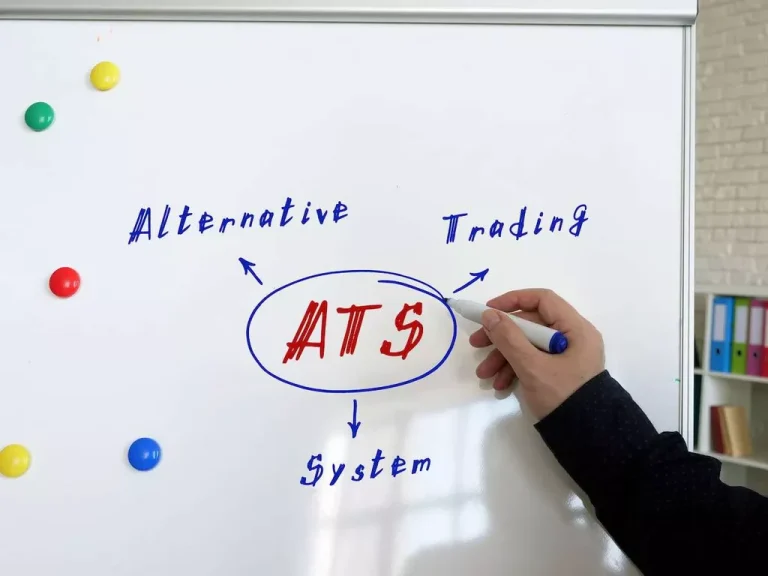But there is a well-developed ecosystem for these freely floating currencies where that is less the case on CBDC. Antoinette Schoar is a professor of finance at MIT’s Sloan School of Management, and she’s considered one of our educational companions who particularly focuses on tendencies in digital belongings. Last week, Antoinette and I sat all the method down to have a dialog about stablecoins and CBDCs as a part of State Street’s annual Official Institutions Conference held in Boston, from which this week’s episode comes. Private cryptocurrency has been around for 15 years, and institutional acceptance is now a reality Stablecoin Payments.

Stablecoins, Central Financial Institution Digital Currencies And Us Dollar Hegemony

So as skeptical as I am, it is onerous to argue in opposition to the notion that cryptocurrencies are here to remain, likely permanently. The Bank of England and HM Treasury have seen that the way individuals pay for issues is changing. People can also decide to invest their stablecoins to make a return on them. While Bitcoin is a kind of cryptoasset, it’s not a stablecoin. Another concern is knowledge collection, specifically customers’ private information similar to their buying behavior. However, authorities might prevent knowledge assortment with regulation as well, and the issuance of CBDC may also require the regulation of pockets providers to forestall information assortment.

What Is Central Bank Digital Currency (cbdc)?
The Bank of England desires companies that issue stablecoins used mainly for payments, to issue them in a secure method. Then the stablecoin is issued to the broader public through one other sort of infrastructure generally recognized as a ledger. It additionally transfers the value of stablecoins between individuals. Stablecoins are backed by a specified asset or basket of assets which they use to maintain up a secure worth in opposition to that asset. This makes stablecoins totally different from cryptoassets which have a tendency to not have property as backing and so, are extra unstable. A stablecoin is a type of digital asset that can be used to make funds.
The Means Forward For Crypto Investments: Developments And Predictions
The article finishes by highlighting what the present role of stablecoins implies for monetary stability and the significance of their regulation. The third danger is to the interoperability of eMoney and thus to market contestability. If eMoney issued by totally different providers just isn’t interoperable, solely the biggest suppliers will survive. The fats cats will eat the nimble and probably more progressive mice. Even regulation mandating common technological standards will not resolve the difficulty.
Meanwhile, central banks face the problem of introducing a timely CBDC model a minimal of on par with digital offerings of private-sector innovators so as to set up credibility with such efforts and achieve adoption. Emerging privately issued stablecoin options could increase considerations over the potential for big personal entities to aggregate—and monetize—large sets of behavioral knowledge on non-public residents. The European Central Bank announced just lately it was progressing its ‘digital euro’ project into a more detailed investigation section.1“Eurosystem launches digital euro project,” press launch, European Central Bank, July 2021, ecb.europa.eu. More than four-fifths of the world’s central banks are similarly engaged in pilots or different central bank digital forex (CBDC) actions.2Codruta Boar and Andreas Wehrli, Ready, regular, go? Results of the third BIS survey on central bank digital foreign money, Bank for International Settlements, BIS Papers, number 114, January 2021, bis.org. Concurrently, a number of non-public, stabilized cryptocurrencies—commonly known as stablecoins—have emerged outdoors of statesponsored channels, as part of efforts designed to boost liquidity and simplify settlement throughout the growing crypto ecosystem.
China’s CBDC pilot of e-CNY depends on private-sector banks to distribute and keep these accounts for his or her prospects. Another important consideration throughout the authorized framework is the necessity for stablecoin issuers to keep up enough reserves to again the value of the stablecoin. This requirement ensures that users can redeem their stablecoins at any time for the underlying asset, thus offering stability and trust within the stablecoin’s value. Additionally, rules may also dictate how these reserves are managed and audited to ensure transparency and accountability. And that’s the place this week’s discussion gets actually attention-grabbing, as a end result of that can also be increasingly the case, I think, for safer stablecoins after which potentially central financial institution issued digital currencies.

Stablecoin arrangements are advanced, consisting of a wide range of functions and actions that in flip are carried out by multiple entities across a variety of sectors and jurisdictions. It will thus be necessary to adequately cover all relevant entities and capabilities in a stablecoin arrangement. Global teams such as the FSB might present granular guidance to close gaps in areas the place relevant standards or standard-setting our bodies do not exist. Furthermore, the standards should guarantee consistency in necessities, regardless of the sectoral origin of a stablecoin’s sponsors, features and activities (for instance, whether it is issued by a financial institution or by different entities), in accordance with the “same enterprise, same threat, similar rule” precept. Much depends on the security and liquidity of the underlying assets, and on whether or not they absolutely back the coins in circulation. It additionally is dependent upon whether belongings are shielded from other collectors if the stablecoin supplier goes bankrupt.
But the issue that individuals have pointed out is that when individuals can run on their banks at a moment’s notice, they could also run just based mostly on rumors. And when they run on rumors, they may be creating instability that’s not even there yet. What I mean with this is that we now have already seen, right since the onset of the massive debate of cryptocurrencies, suddenly fee platforms have woken up and have realized that the attractive monopoly rents that they have been sitting on for the final so many many years are coming somewhat to an end.
- Globally, banks and financial establishments process far more transactions digitally than they do in bodily branches.
- Equally, full digitization of sovereign currencies might facilitate simpler global commerce flows.
- Potential advantages include mitigated KYC threat and lowered compliance cost related to transaction monitoring and reporting, given eCNY’s “controlled anonymity” (only central banks will have full access to trading data).
- The CBDC can be convertible at par (i.e. one for one) with other forms of money, and in all probability it will also be specified to serve as authorized tender.
- The proponents of cryptocurrencies, or CBDCs, they profess to their protected haven qualities.
An instance of a cross-border cost is when somebody sends money to household or associates overseas. But, as a result of stablecoins have a stable value, individuals might start utilizing them extra to pay for a wider vary of issues. International standards might need to cover all relevant entities and functions in a stablecoin association.
However, the introduction of CBDCs also raises considerations about privateness, security, and the role of commercial banks in the financial system. Critics argue that CBDCs might undermine the traditional banking mannequin by allowing people and companies to carry accounts directly with the central financial institution, bypassing business banks altogether. This may have far-reaching implications for the soundness of the banking system and the transmission of monetary coverage.
Holders of stablecoins may face losses in the event of a run on or failure of a stablecoin. Currently, holdings of Tether, USD Coin and DAI are concentrated amongst massive investors, i.e. these holding more than 1 million coins (Chart 4). They account for more than 80-90% of the availability of those stablecoins on the Ethereum blockchain,[32] whereas retail buyers, defined as having a stability of lower than 10,000 items of every of these stablecoins, symbolize 3% or much less. Data gaps don’t permit for the identification of those giant traders. Anecdotal proof suggests that they may be specialised institutional investors, corresponding to specialised crypto funds or hedge funds, by which case spillovers to the monetary system could be restricted.[33] In the specific case of TerraUSD, holders have suffered large losses.
While this represents a solid proof of concept, it compares with over two billion monthly lively customers reported by China’s largest digital know-how cost providers WeChat Pay and Alipay. With the rapid rise in circulation of stablecoins over the past couple of years, central banks have stepped up efforts to discover their very own steady digital currencies (Exhibit 2). The thought of bank-issued stablecoins (b-coins), outlined as absolutely reserve-backed digital currencies, differs from CBDC along several dimensions. First, the burden of privateness, security and anti-money laundering is moved onto non-public sector issuers whereas providing an equivalent performance to CBDC. Second, b-coins are not a legal responsibility of the central bank, however the full reserve part ensures that one hundred pc of a b-coin’s property are held in central bank reserves, which suggests they supply the same safety and liquidity as a CBDC. Third, b-coins could be issued by multiple personal entities, which sets up the market to promote competition and innovation over time.
Read more about https://www.xcritical.in/ here.
